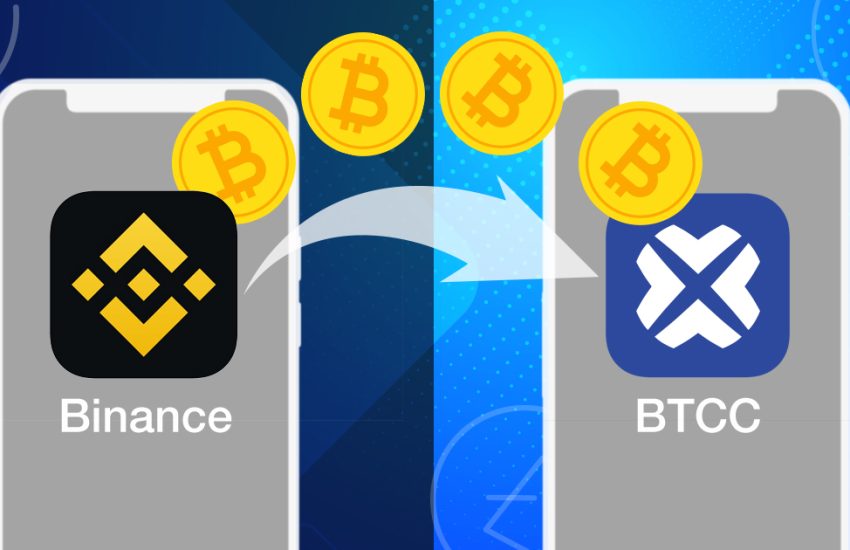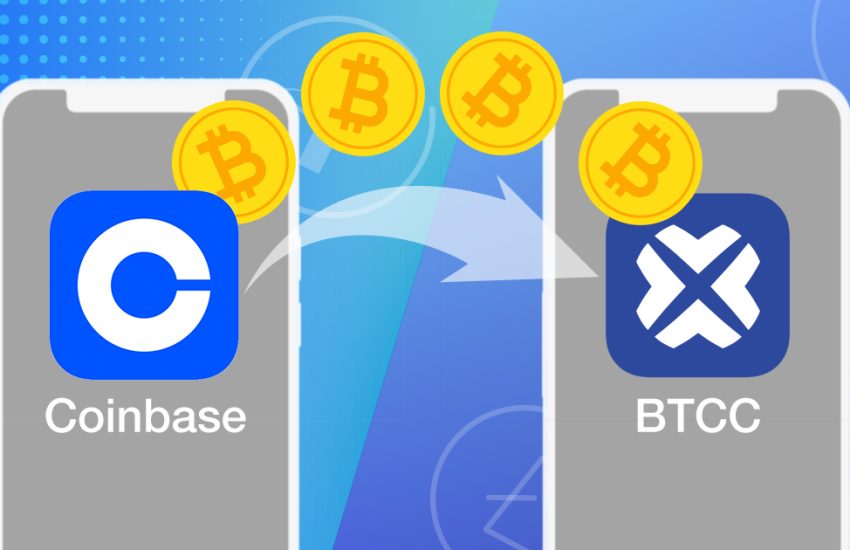Simple CFD Trading Strategies for Beginners 2020
Finding simple yet profitable trading strategies for CFDs can be challenging. This post brings three simple CFD trading strategies that any beginner can quickly learn and start implementing immediately to stocks, FX, crypto, and the list goes on.
1 Heiken Ashi Trend Trading Strategy
First on the list of trading strategies that best suits beginners is the Heiken Ashi trend following Trading strategy.
Unlike traditional Japanese candlestick charts that can be subjective in interpretation, the Heiken Ashi chart reveals trends following strict rules. These rules have been used in developing a trend following strategy because of the more objective and quantifiable nature of the Heiken Ashi candlesticks.
The Heiken Ashi candlesticks’ simplicity makes it easy for new and experienced traders to identify trends and consolidations as it filters out the market’s noise.
From now on, we shall refer to the Heiken Ashi candlestick as HA-candlestick for simplicity.
| BONUS: Trade bitcoin CFDs on BTCC derivatives trading platform and get 2,000 USDT deposit bonus now! |
Heiken Ashi Chart Trend Following Rules
1 Consecutive bullish closing bodies (green) show an uptrend, while consecutive bearish closing HA-Candlestick body indicates a downtrend.
2 An uptrend is considered healthy if it has a more elongated HA-candlestick body with no lower shadow. Conversely, a trend is substantial if it has a more extended downward closing HA-candlestick body with no upper shadow.
3 A bullish or bearish trend is considered weaker if new HA-candlesticks with smaller bodies follow the sequence of bullish HA-candlesticks or bearish HA-candlesticks.
Heiken Ashi Bullish Trend
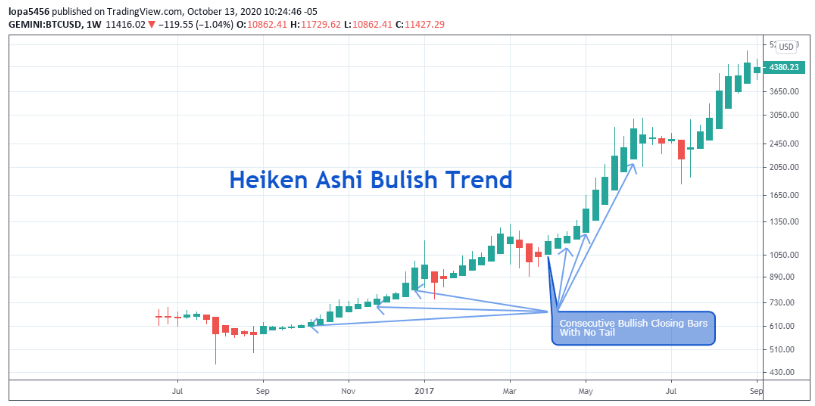
Entry Condition in a bullish Trend
A buy order is confirmed if two consecutive bullish candlesticks with no lower wicks are spotted after an opposite series of bearish closing HA-candlesticks.
Bullish Exit (Stop Loss)
The stop loss in an HA-Bullish trend should be placed below the low-wick of the last bearish HA-Candlestick.
Bullish Exit (Take Profit)
The buy order can be closed in profit if the crypto asset moves higher by 2X of the entry to stop loss distance or if the bullish trend starts to show candlesticks with lower wicks.
Heiken Ashi Bearish Trend
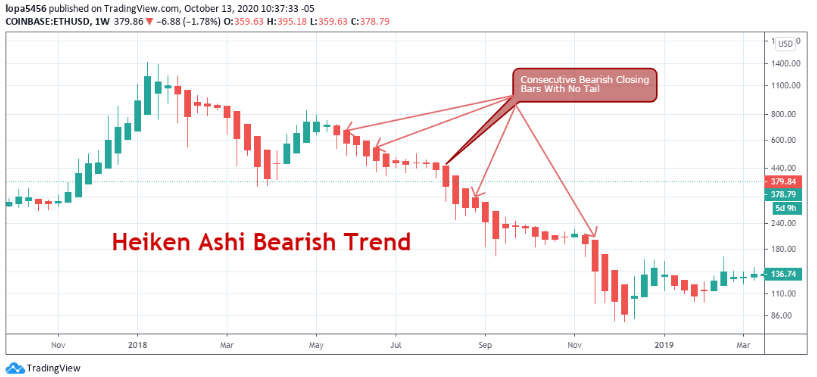
Entry Condition in a Bearish Trend
A sell order is initialized if two bearish closing HA-candlesticks with no upper wicks are spotted after a previous series of bullish closing HA-candlesticks.
Bearish Exit (Stop Loss)
A protective stop is placed above the last bullish HA-Candlestick wick if the trade doesn’t go in our favor.
Bullish Exit (Take Profit)
A profit target is set at 2X the distance between the entry and stop loss level, or the trade can be closed in profit after a bearish closing HA-Candlestick with an upper wick.
2 Stochastic Trend Following Strategy
The strategy considers the stochastic oscillator that comes shipped with most CFD trading terminals.
| BONUS: Get up to 2,000 USDT deposit bonus on BTCC derivatives trading platform where you can trade bitcoin and other cryptos with CFDs. |
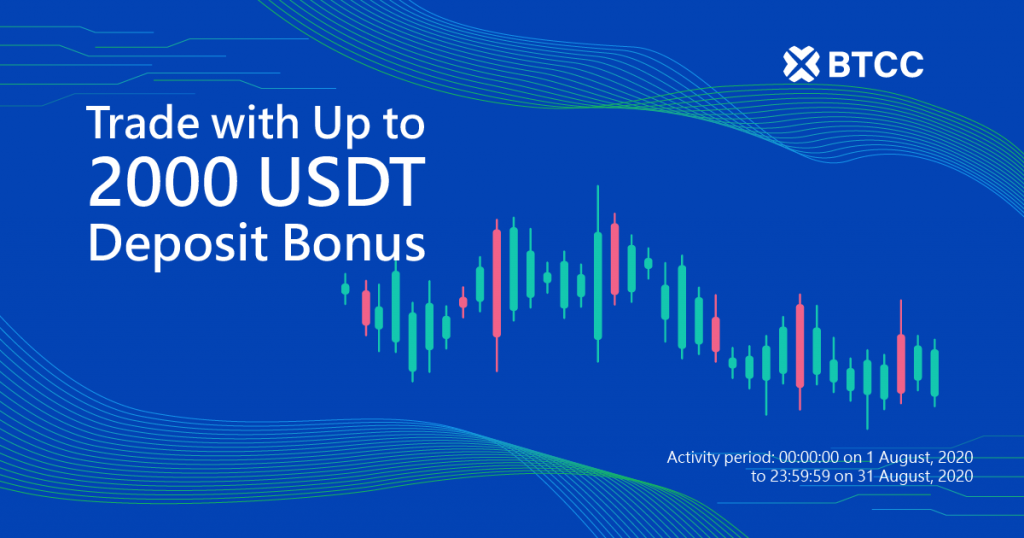
Let’s start with a bullish Scenario.
Bullish Trend
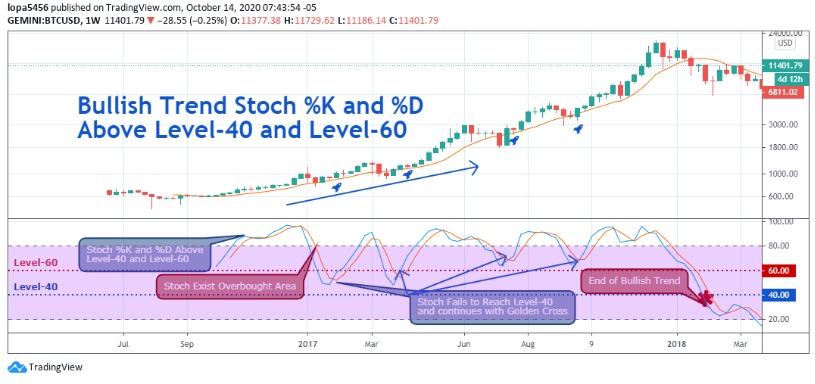
A bullish trend is identified when the %K & %D of the stochastic oscillator is above the stochastic level-40 and level-60 and advance into the overbought area.
Bullish Entry Signal
Traders should wait for the stochastic oscillator to then exit the overbought area, followed by a golden cross of the %k and %D without moving below the stochastic level-40, as shown above.
Bullish Exit Condition (Stop Loss)
After identifying the bullish trend and entering a buy order, a stop-loss order should be set below the last bearish bar before the golden cross.
All open trades can also be exited upon confirmation of an opposite bearish trend.
Bullish Exit Condition (Take Profit)
The take profit for each golden cross entry signal should be set at 2X the risk exposure (distance between entry price and stop loss level).
Bearish Trend
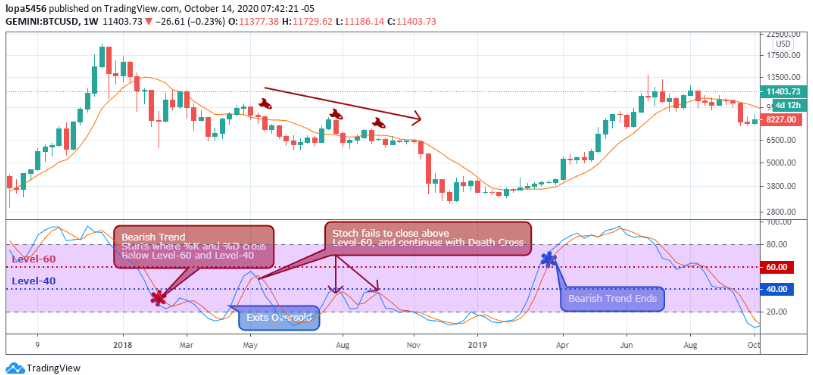
The bearish trend is confirmed when the %K & %D of the stochastic oscillator cross below the level-60 & level-40 and advance into the oversold area.
Bearish Entry Signal
A sell order is a trigger after a death cross that comes after an oversold area exit, followed by a failure to continue above the stochastic level-60.
Bearish Exit Condition (Stop Loss)
Traders can set a stop-loss order above the last bullish candlestick high before the death cross.
Another alternative is to exit at an opposite bullish signal.
Bearish Exit Condition (Take Profit)
The take profit for the sell orders should be set at 1.5X to 2X reward to risk ratio considering the distance between the entry and stop-loss price levels.
3 Trading Strategy around Ascending and Descending Triangle Setups
This trading strategy involves visual identification of chart formations on any time frame of different asset classes such as Forex, Cryptos, or Stocks.
The triangles’ shape also considers the Support and Resistance zones on the chart to qualify it for either an ascending triangle or a descending triangle.
Let’s proceed to visual illustrations of the Ascending and Descending Triangles chart patterns, throw more light on the formation, and how they can be used in trading.
Ascending Triangle

Two opposite lines mark a rising trend as support and flat top for resistance represent the ascending triangle chart pattern.
The chart formation leans towards a bullish bias. However, a price slump below the lower trend line could also imply a change towards the downside trend.
The shape of an Ascending Triangle is formed as the price keeps making a higher low while the top is within the same zone.
Entry and Exit Conditions Following a Break of Ascending Triangle
Entry
Upon identifying the ascending triangle chart pattern, the trader should wait for a bullish closing candlestick above the structure’s flat resistance top before initiating a buy order.
Let’s take an example:
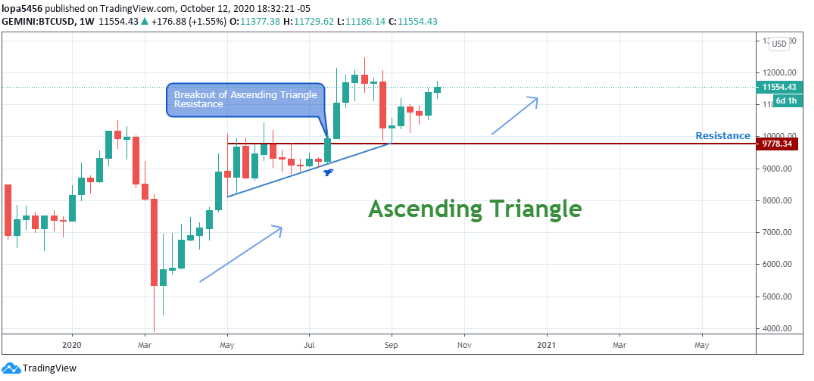
The BTCUSD weekly time frame shows an ascending triangle formation, and the price close above the $9786.19 resistance level confirms a decision to enter a long order.
Exit – Stop Loss
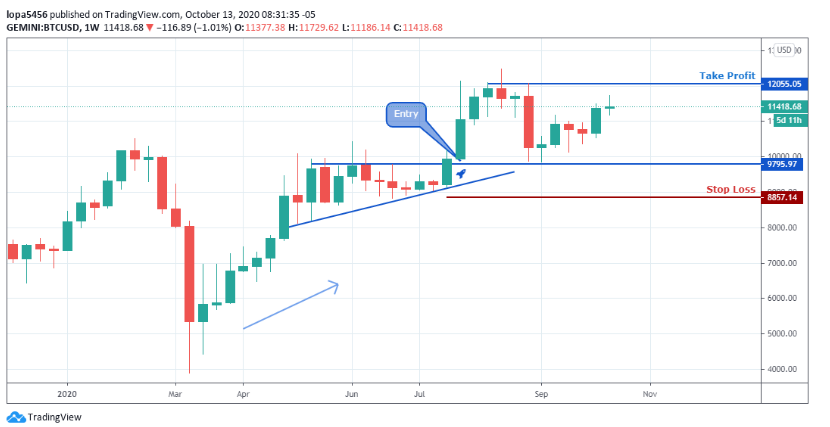
The stop loss level in a bullish breakout should be set below the breakout candlestick’s low price.
Exit – Take Profit
Although the take profit level can be subjective, we’ll recommend 2X of the distance between the entry and stop loss level for crypto CFDs such as BTCUSD and ETHUSD.
Descending Triangle
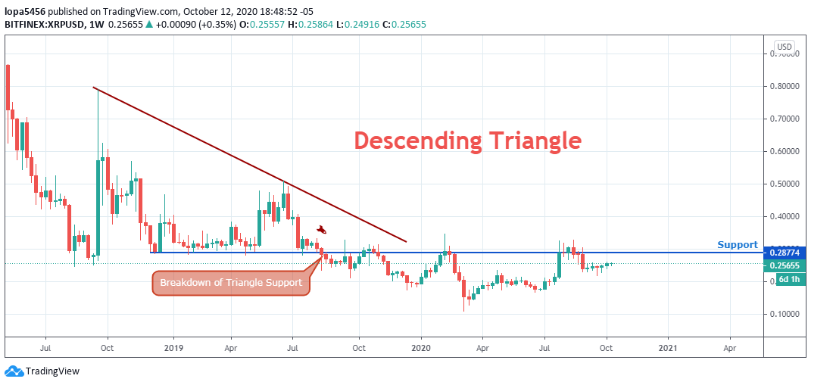
The descending triangles look like an ascending triangle that’s flipped towards the downward direction. It has a trend line that slopes to the downside and a horizontal line for support where the price has struggled to break.
Entry and Exit Conditions Following A Break of Descending Triangle Support
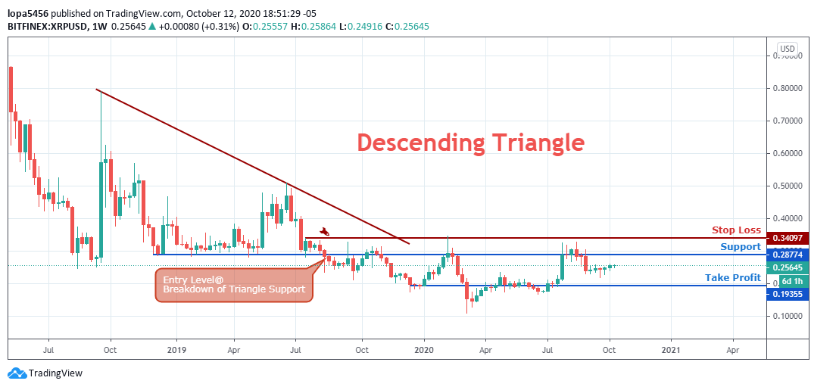
Bearish Entry Condition
As soon as descending triangle support is identified, we wait patiently for a breakdown of the support level, as shown on the XRPUSD chart below.
Bearish Exit Condition (Stop Loss)
The stop loss is set above the high price of the breakdown candlestick, as shown in the image above.
Bearish Exit Condition – Take Profit
The take profit for a descending triangle market structure is similar to that of the ascending triangle at 2X of the entry to stop loss distance.
Conclusion
Although these strategies are easy to follow, we cannot overemphasize the need to follow sound risk and money management rules when following these trading strategies.
Happy trading!
| BONUS: Trade bitcoin CFDs on BTCC derivatives trading platform and get 2,000 USDT deposit bonus now! |




